How long can you stay in bed? The average person sleeps for 9 hours a day, the average dog sleeps 11 hours a day, and the average cat sleeps for 16 hours a day. Bears typically hibernate for 7 months! Hibernation, however, is very different from sleeping. During hibernation, an animal’s metabolic rate, heart rate, and respiratory rate slow down greatly. Hibernation occurs in many animal species including bears, various ground squirrels, groundhogs, some prairie dogs, fat-tailed dwarf lemurs, and others. Hibernation is well studied in bear species, but scientists debate whether this behavior in bears is “true” hibernation. This article will explore hibernation in bears, whether or not it is “true” hibernation. It will also answer that all-important question: “where do bears hibernate?”. What, why, when, and where- let’s find out!
What is hibernation?
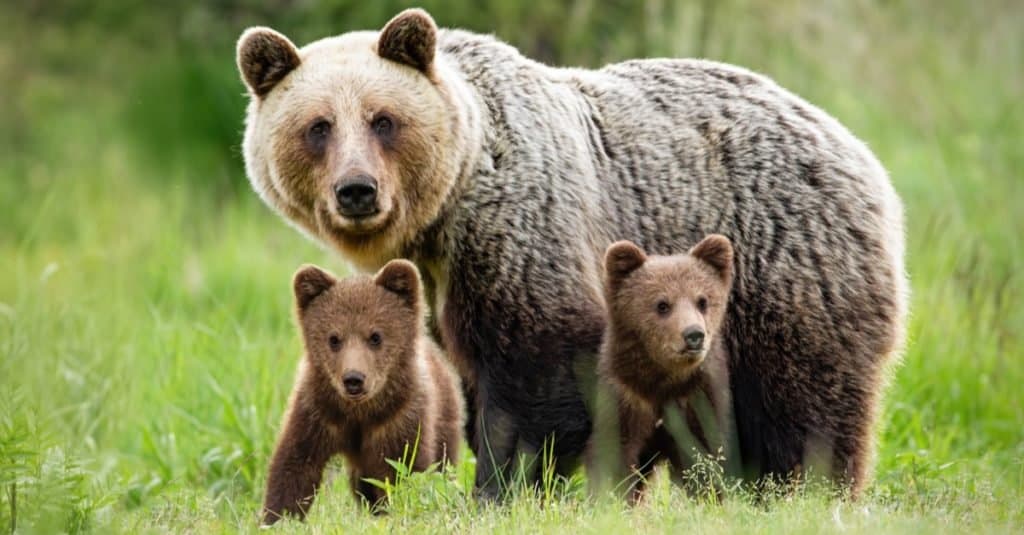
Protective female brown bear,
Ursus arctos, standing close to her two young cubs
©WildMedia/Shutterstock.com
In short, hibernation is when an animal uses less energy for extended periods of time.
Now, let’s dive into the details. Hibernation is a state of physiological dormancy and metabolic depression typically in response to cold temperatures or food scarcity. To break this down, hibernation is when the animal becomes inactive, and its internal processes work slower as to use less energy. During hibernation, an animal’s metabolic rate decreases greatly. Metabolic rate describes the amount of energy being used by all the cells of an individual and is usually measured in terms of oxygen consumption over time. A decrease in metabolic rate is therefore tied hand-in-hand with a decrease in respiratory rate and heart rate. An endotherm is an animal that regulates its body temperature with metabolic processes. Decreasing metabolic rate conserves energy and causes body temperature to drop.
In winter months, food is often scarce and may be insufficient for an animal awake, attempting to forage or hunt, and expending energy it cannot replenish. In response to periods of food scarcity, many animals eat a large amount of food when it is available. Then when food is unavailable they hibernate. Eating excessively before hibernation is called hyperphagia. Hyperphagia is necessary before a period of hibernation because enough energy reserves must be established to last an animal through its period of dormancy.
The initial definition of “true” hibernation was a decrease in metabolic processes that result in a substantial decrease in body temperature. Bears’ body temperatures only drop 3-5ºC compared to other animals whose body temperatures drop 32ºC or more. Scientists were therefore unsure if bears were actually hibernating. Recent research has established that many bears do hibernate and do not enter some other form of dormant state.
Why do bears hibernate?
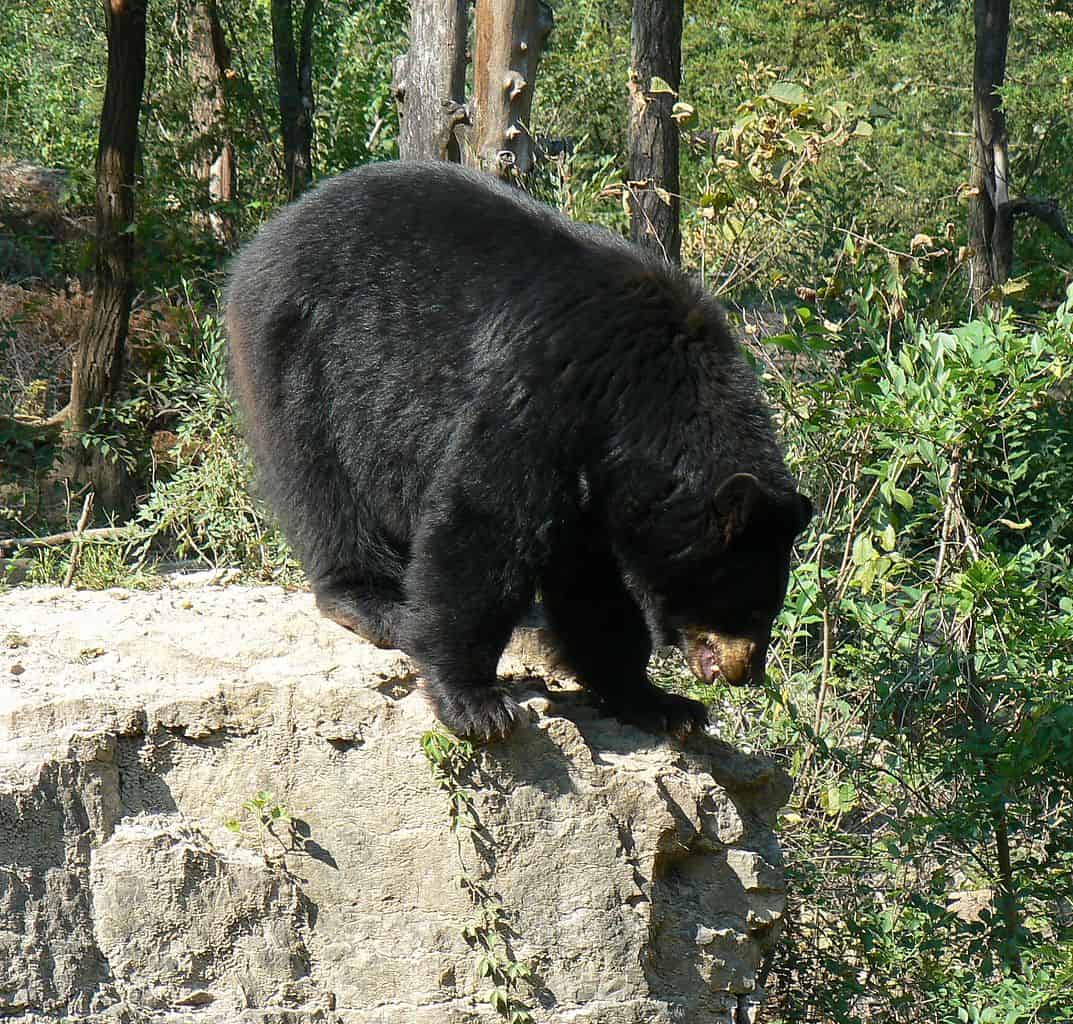
, American Black Bear, foraging for food
©MONGO, Public domain, via Wikimedia Commons – License
Not all bears hibernate. For example, polar bears are active all year and have a unique ability to fast for months at times when food is scarce. Panda bears also do not hibernate because they are able to move to higher and lower elevations as ambient temperatures change. Similarly, the sun bear does not hibernate because its food resources are available during all seasons.
Bears that do hibernate do so because seasonal changes to food availability make them unable to provide for themselves for long periods. Even the omnivorous brown bear, that subsists on both meat and plant-based resources, hibernates during winter months. Many plant food resources lose their fruit and foliage in environments with harsh winters. Prey also become more elusive and may hibernate as well. The lack of available food requires certain species to enter an inactive state where their metabolisms will slow. This is so they can stretch what resources they do have for longer periods.
When do bears hibernate?
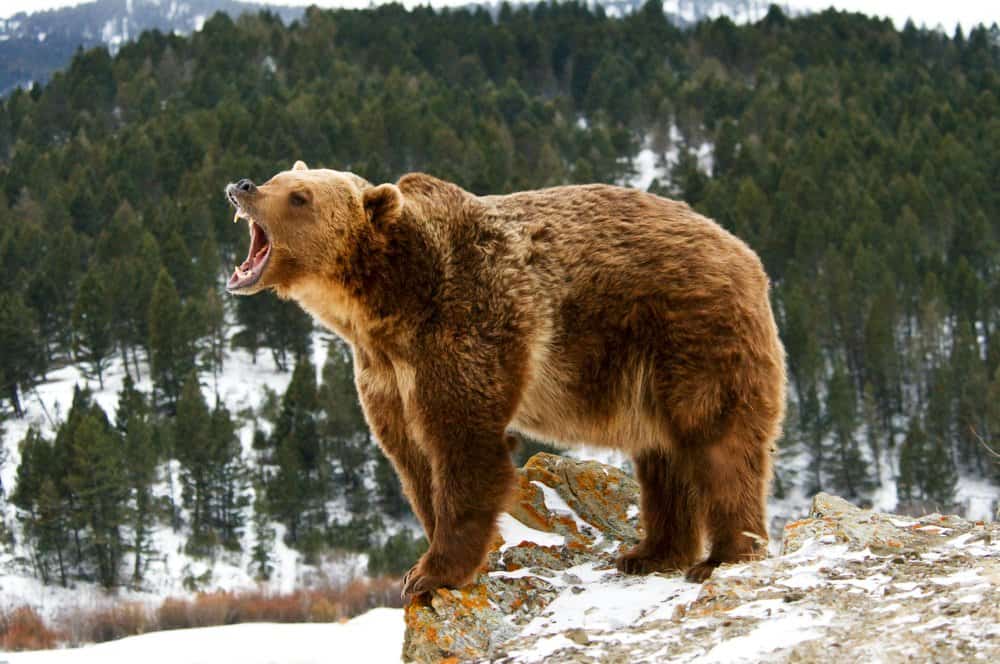
Grizzly bears will enter their dens based on the presence of snow and ambient temperatures
©Scott E Read/Shutterstock.com
Bears that do hibernate include the Andean bear (also known as the spectacled bear), the American black bear, some Asiatic black bears (also known as moon bears), and brown bears. These species enter hibernation based on environmental cues. A 2016 study followed the hibernation cycles of 14 brown bears over three winters to better learn how this happens. It was found that bears enter their dens for hibernation at first sight of snow and when temperatures reached 0ºC. Their body temperature, activity levels, and heart rate begin to slow weeks before, however.
In the period before hibernation, these bear species are hyperphagic as to build their nutrient and energy reserves. An American black bear eats up to 90 pounds of food a day in preparation for hibernation. Brown bears also weigh their most in late fall before the onset of winter. Himalayan black bears usually weigh between 200 and 265 pounds but can weigh as much as 400 pounds when engorging themselves before winter.
Females of some bear species, including American black bears, will enter hibernation for the duration of their pregnancy. Nearly all pregnant Asiatic black bears hibernate as well. The mothers will greatly increase their body mass before hibernating and gestation will occur while they are dormant. The offspring are born either during or shortly after the period of hibernation. The health and weight of the offspring is a direct reflection of how much weight the mother could amass before hibernating.
Where do bears hibernate?

Polar Bear (
Ursus maritimus) cubs in a maternity den
©U.S. Fish and Wildlife Service – Public Domain
Bears hibernate in dens that they find or construct to protect themselves from the elements while they are dormant. American black bears typically dig out dens in the ground. They may also shelter themselves in hollowed-out tree cavities, under logs, or in caves. Female black bears have been observed being pickier in choosing their dens than males. Many Asiatic black bears remain active all year, but some northern subspecies hibernate seasonally. They usually prepare dens similar to American black bears. These include caves, hollowed out logs, holes they have dug in the ground, or the abandoned dens of other bears. Similarly, brown bears usually make dens out of hollow logs, cavernous tree roots, holes in the ground, or caves.
Although polar bears do not hibernate, they do create maternity dens and enter a dormant state that has some similarities to hibernation. The pregnant female digs a maternity den in a snow drift consisting of an entrance tunnel and three chambers. She then enters a dormant state similar to hibernation. This state, however, is not continuous sleep, and her body temperature does not decrease. The bear’s heart rate decreases from 46 to 27 beats per minute. She stays in this den even after her offspring are born for a period of nursing. The cubs are born weighing 2 pounds and when the mother breaks open the entrance to the den, they weigh 22-33 pounds! Polar bears in the same subpopulation often reuse maternity dens.
How are different bear species doing today?
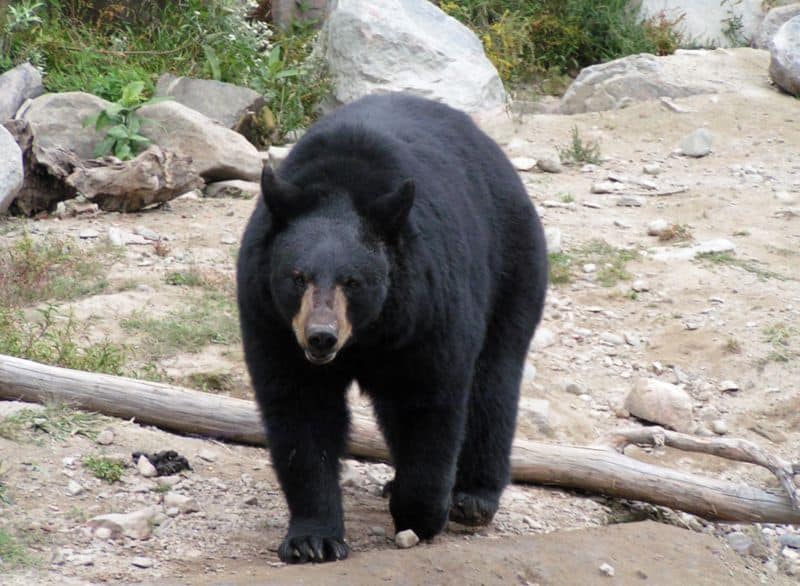
American black bear- least concern
©Diane Krauss (DianeAnna), CC BY-SA 3.0, via Wikimedia Commons – License
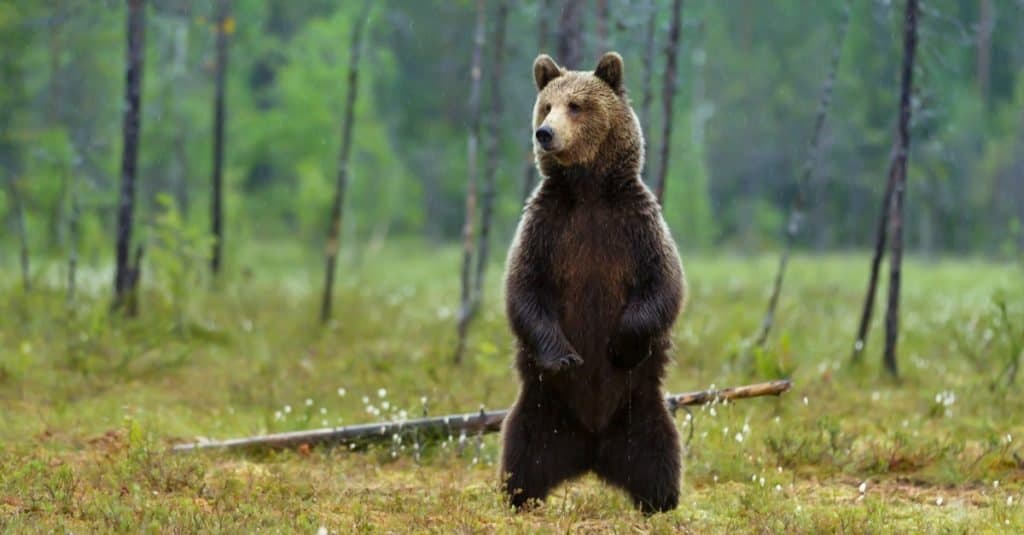
Brown bear- least concern
©Giedriius/Shutterstock.com
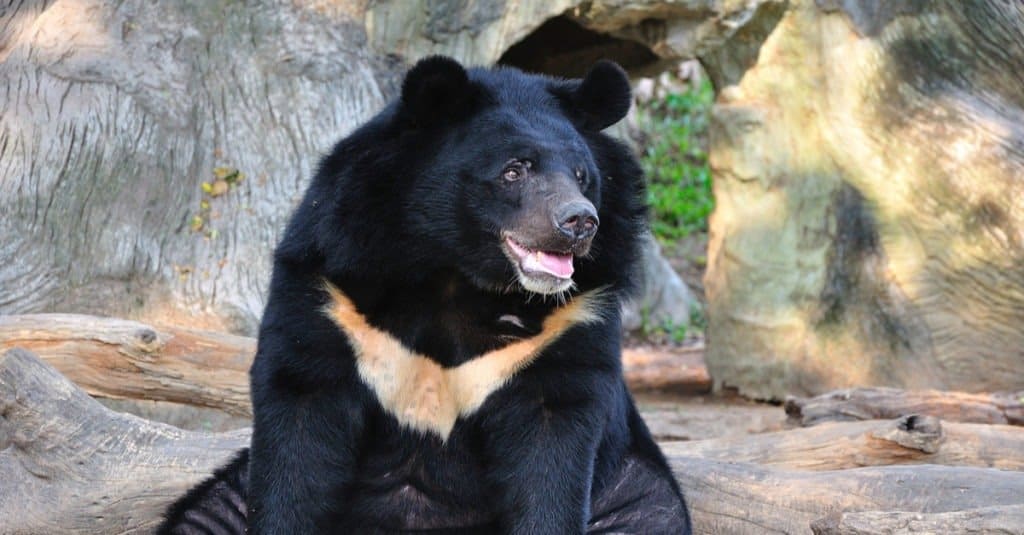
Asiatic black bear- vulnerable
©Tigger11th/Shutterstock.com
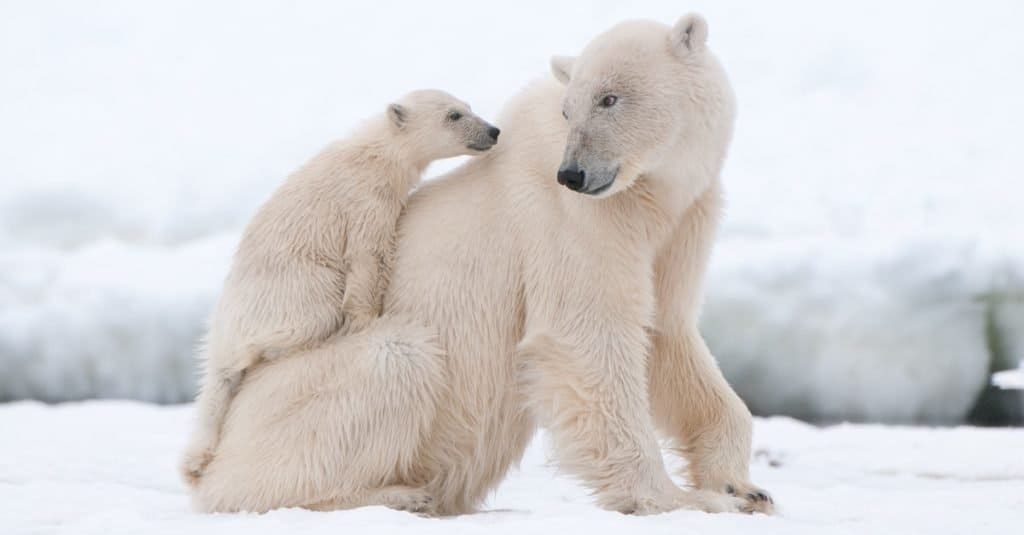
Polar bear- vulnerable
©Gecko1968/Shutterstock.com

Sun bear- vulnerable
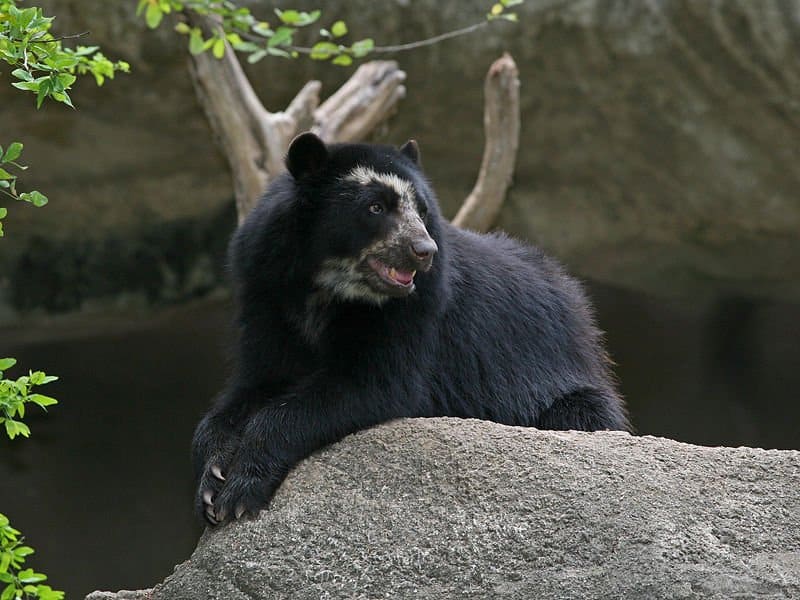
Spectacled bear- vulnerable

Panda bear- vulnerable
©Manfred Werner / Tsui, CC BY-SA 3.0, via Wikimedia Commons – License
With the question “where do bears hibernate?” answered, it’s time to take a look at just how well the world’s bruins are doing at present. Different bear species have varying conservation statuses ranging from least concern to vulnerable. Bear species with the status least concern include the brown bear and American black bear. The IUCN red list tracks these populations and reports that brown bear populations are stable and American black bear populations are increasing.
Vulnerable bear species include the sloth bear, sun bear, spectacled bear, polar bear, Asiatic black bear, and the giant panda bear. A vulnerable species is at risk of becoming endangered if there is no intervention. All of these vulnerable species are declining with the exception of the giant panda.
Red List assessments of panda bears in 1990, 1994, 1996, and 2008 labelled them as endangered. Successful conservation efforts have led to the reclassification of pandas from endangered to vulnerable in 2016. Conservation efforts include the designation of protected national parks, breeding programs, and protective legislation. Approximately 70 national reserves have collectively formed the Giant Panda National Park in 2020. This aims to improve the accessibility of mates between fragmented panda populations. This national park spans 10,500 square miles which is three times the size of Yellowstone National Park- the 8th largest of the 423 sites in the United States’ National Park System.
The photo featured at the top of this post is © Dennis W Donohue/Shutterstock.com
FAQs (Frequently Asked Questions)
Where do black bears hibernate?
Black bears will hibernate in hollowed out logs, holes they dig in the ground, caves, and abandoned dens of other bears. While black bears in America hibernate, some Asiatic black bears will stay active year round. Black bears can weigh up to twice their usual weight before they begin hibernating!
Where do polar bears hiberate?
Polar bears do not hibernate. However, pregnant polar bears will construct maternity dens that they will stay dormant in for long periods of time.
Thank you for reading! Have some feedback for us? Contact the AZ Animals editorial team.






